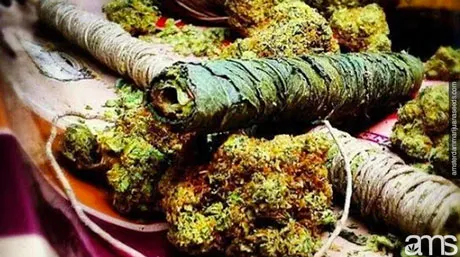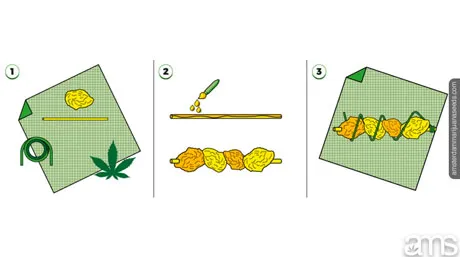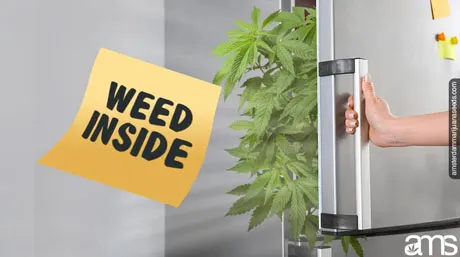General topics
A Green Solution for Our Environment and Industries
Published
11 months agoon
By
admin
With escalating environmental concerns, society’s search for sustainable, innovative solutions has never been more critical. One solution that shows great promise lies in the cultivation of an adaptable and versatile plant species known as industrial hemp. In this in-depth exploration, we will delve into the environmental benefits and the extraordinary potential of industrial hemp as an eco-friendly alternative across various industries.
I. The Background and Adaptive Nature of Industrial Hemp
Hemp, a variant of the Cannabis sativa plant species, boasts a history of usage dating back thousands of years due to its myriad applications. From ancient Chinese civilizations weaving hemp fibers into textiles to American colonists using it for paper and rope, the applications of this plant are as diverse as its history. Nevertheless, it is crucial to distinguish industrial hemp from marijuana – the former contains less than 0.3% THC, the psychoactive component in marijuana, making it unsuitable for recreational use.
Industrial hemp is a robust plant that makes it an environmentally sound choice for cultivation. It’s worth highlighting that it requires significantly less water than many traditional crops, including cotton. Hemp needs only about 20% of the water needed for cotton cultivation, offering a potential solution for regions prone to drought or with limited water resources. Furthermore, industrial hemp boasts a remarkable natural pest resistance, making it an ideal choice for organic farming and reducing the need for potentially harmful pesticides. This resistance not only lessens the strain on the environment but also allows for healthier soils and ecosystems, marking a significant stride in sustainable agriculture.
II. Industrial Hemp: A Carbon Sink and Soil Regenerator
Industrial hemp’s environmental impact extends far beyond water conservation and pest resistance. It exhibits impressive performance when it comes to absorbing carbon dioxide (CO2) from the atmosphere – an essential process known as carbon sequestration. Hemp absorbs more CO2 per hectare than many other crops and most trees, making it a formidable ally in our global fight against climate change.
Apart from its carbon sequestration potential, industrial hemp also contributes positively to soil health. Its deep root system helps to improve soil structure and prevent soil erosion, a critical factor in maintaining the health and sustainability of our agricultural systems. When the hemp plants decompose, they enrich the soil with nutrient-rich organic matter, enhancing its fertility for future crops. The impact of this cannot be overstated – by improving soil health, we can increase agricultural productivity and resilience, contributing to global food security and environmental protection.
III. Industrial Hemp’s Versatility Across Industries
The potential of industrial hemp extends far beyond agriculture and into various other industries:
A. Textiles
In the textile industry, the durability and strength of hemp fibers present a more sustainable and environmentally friendly alternative to synthetic fibers and cotton. Hemp can be used to create a vast array of textiles, from clothing to upholstery and even carpets. By switching to hemp-based textiles, we can significantly reduce our environmental impact and help build a more sustainable fashion industry.
B. Food Products
In the food sector, hemp seeds offer a nutrient-rich source of essential fatty acids, proteins, and vitamins. The potential of hemp seeds in contributing to our diets and promoting a sustainable food system is vast. They can be used in everything from baking to smoothies, offering a healthy, environmentally friendly alternative to many conventional food products.
C. Biofuels
In the energy sector, industrial hemp shows tremendous promise. It can be processed into biofuels like biodiesel and ethanol, which can reduce our reliance on fossil fuels and mitigate greenhouse gas emissions. As the world moves towards more sustainable energy sources, hemp-derived biofuels could play a significant role in this transition, offering a renewable, sustainable alternative to conventional fuels.
D. Building Materials
In the construction industry, industrial hemp is making its mark. It can be processed into several eco-friendly building materials like hempcrete – a composite material used in construction. These materials not only offer a sustainable alternative to traditional building materials, but they also have the added benefit of carbon sequestration. This means that not only are we reducing the environmental impact of the construction industry by using hemp-based materials, but we are actively removing CO2 from the atmosphere in the process.
Conclusion:
Industrial hemp stands out as an eco-friendly powerhouse with potential applications in numerous sectors. Its resilience, low resource requirements, carbon sequestration capability, and soil regeneration properties make it an environmentally beneficial crop. Furthermore, its versatility offers sustainable alternatives in industries such as textiles, food production, biofuel generation, and building construction. The cultivation and utilization of industrial hemp represent a significant step forward in our journey towards a more sustainable and eco-friendly future. By harnessing the power of this impressive plant, we can make strides towards environmental conservation and sustainable development in the face of increasing environmental challenges.
Disclaimer: This content is meant for educational purposes only. It has been compiled with research from external sources. it is not meant to substitute any medical or legal advice. Please see your local laws for the legality of cannabis use.
You may like
-


The Economic Impact of Cannabis
-


“A big deal”: What the feds’ move to reclassify marijuana means for Colorado cannabis
-


Star signs and cannabis strains: May 2024 horoscopes
-


Yesterday’s Marijuana Rescheduling News, Explained
-


The Marijuana Industry’s Secret Playbook to Get Weed Legalized in All 50 States
-


The Green Rush to Colorado’s Multibillion-Dollar Weed Industry | WEEDIQUETTE
General topics
Thai Stick Weed: Exploring Exotic Cannabis Delights!
Published
2 weeks agoon
April 17, 2024By
admin
Table of Contents
What is a thai stick?
Thai Sticks are legendary cannabis products that originate from the Hill Tribes of Northeast Thailand. The traditional Thai Stick is crafted with a potent strain of cannabis called Asobinaka. The construction process involves impaling cannabis buds on a bamboo stick, then layering them with hash oil and wrapping them in cannabis leaves. This produces a uniquely concentrated form of cannabis, offering users a truly potent smoking experience.
Thai weed going global!
The popularity of Thai Sticks in the United States emerged during the Vietnam War, as soldiers discovered these potent cannabis products during their downtime. Upon returning home, the demand for Thai Sticks skyrocketed, resulting in thousands of kilos of weed and hash being smuggled into the U.S. However, as the supply of the key ingredient, the Asobinaka strain, dwindled, so did the demand for Thai Sticks. Today, the legacy of Thai Sticks continues, particularly in cannabis-friendly locations like Amsterdam. Adventurous individuals can even try crafting their own Thai Stick, Just don’t forget to take a picture and post it on Instagram, tag us so we can all see the result and enjoy the beauty.
What are cannabis cigars?
A Cannabis Cigar, also known as a Cannagar, is an enhanced smoking experience that utilizes hemp wick in place of tobacco. This natural and eco-friendly alternative is growing in popularity as more people seek healthier and more sustainable ways to consume cannabis. Essentially, a Cannabis Cigar dipped in hash oil is a contemporary interpretation of a Thai Stick, minus the bamboo skewer.

How to make thai sticks?
Creating your own Thai Stick requires certain materials including whole weed buds, cured cannabis leaves, bamboo skewers, hash oil, hemp wick, and parchment paper. After securing these items, you can start by coating your bamboo stick in hash oil to make the buds stick to it. Next, you’ll skewer your buds onto the stick and wrap them tightly with hemp wick for a uniform burn. Afterward, wrap the stick in parchment paper and freeze it for 24-48 hours. When it’s ready, carefully unwrap it, prepare your leaves, coat the buds with hash oil, and then wrap them with the leaves. The final steps involve wrapping the stick in parchment paper again and applying mild heat to seal everything together, and then wrapping the Thai Stick in hemp cord and curing it.
Hash oil
This is the main ingredient; you can make it yourself! Another process you must follow involves dissolving the weed in a solvent and filtering it.
We will add a link to a “How To” soon, so we can guide you through this step by step. Caution is advised due to the flammability of the solvent. It would be best if you didn’t burn anything but a blunt 😉
With a bit of luck and the right connections, you might be able to purchase it.

How to put your thai stick blunt together
You will begin to construct your Thai Stick following the procedure in the images below:

- to start, you will need to gather all of your materials.
- Next, you must coat your bamboo stick in hash oil. This will allow the bud to stick to the skewer while you finish the process.
- You will then skewer your buds on the Stick, being careful, and leave 1 cm at each end of the skewer. Being careful not to break off any buds, tie your hemp cord to one end of the Stick and start to shape them evenly while wrapping them tightly – this produces an even burn throughout the Thai Stick.
- Wrap the Stick in your parchment paper and put it in the freezer for 24-48 hours. Some people will choose to leave it for an extra day, but it should not stay for more than 3 days.
- Take the skewered buds from the freezer and carefully unwrap the parchment. Remove the string at this point – taking extra caution not to break any off the Stick.
– Once the string is off, prepare your prepared leaves.
– You will want to prepare your leaves by washing them and letting them dry ahead of time. - Now, you want to begin wrapping the Stick with your fresh cannabis leaves.
– Coat the buds with hash oil.
– Carefully wrap the buds with the cannabis leaves.
– You will want to do this three times, so your Stick is wrapped up in three layers of leaves. - Wrapping the Stick in parchment paper again and heat it lightly in a pan or hot plate. This will cause the hash oil to melt and seal everything together. Be Careful! DO NOT BURN IT!
- Remove the paper and gently wrap the Thai Stick in the cord again.
- Wrap it in the paper again in preparation for curing.
How to cure your thai stick
Thai Sticks can be cured using two methods – an earth-based method or a modern method.
- The earth-based method involves burying your Thai Sticks in a plastic bag in the earth for several weeks.
- Alternatively, the modern method requires placing your Thai Sticks in a plastic bag and refrigerating it for 3-4 days.
Each method has its own advantages and potential drawbacks, such as the possibility of mold growth or the required waiting period.

Why would you want to do this? There are a couple of reasons:
Firstly, due to a multitude of factors associated with the earth-based method (plant material, confinement in a non-breathable bag, temperature variations, etc.), your Thai Stick is at risk of mold development. Considering the investment of time, money, and effort that has gone into this project, the last thing you would want is for it to be compromised by mold.
Secondly, the question of patience comes into play – would you prefer to wait several weeks to enjoy your Thai Stick blunt, when you could potentially have it ready in merely 3-4 days with the modern curing process?
Smoking your thai stick
Smoking a Thai Stick is a straightforward process. You can smoke it in a pipe, or bong, or roll it into a joint. The key is to enjoy the experience, taking note of the powerful effects it can have. Thai Sticks are known for their slow burn and long-lasting effects, often burning for up to six hours. It’s important to smoke responsibly, ensuring that you’re in a safe, relaxed environment to fully enjoy the experience.
Thai sticks in a pipe
Thoroughly clean your pipe before packing Thai Sticks into the bowl. Pack Thai Stick into the bowl and light it like any other cannabis product. Enjoy your Thai Stick!
Thai sticks in a bong
Thai Stick is perfect for smoking in a bong! The process is pretty simple, Fill your bong with water and Thai Stick. Light it and enjoy!
Thai stick in a joint
Thai Stick is perfect for smoking in a joint! Roll up the Thai Stick in some rolling paper and enjoy. No need to overthink it!

Regardless of how you choose to smoke it
It is important to take your time and enjoy it. It can be a heavy hit, so be careful and ensure you are in a safe and relaxed environment. We have seen too many tourists in our beloved Dam taking a good thug and getting smoked with the high and all the madness around them.
We recommend that you find a comfortable spot, a relaxed area with chill surroundings, sit back, light it up, and enjoy!

Thai sticks burn longer than normal joints.
It can burn up to 6 hours on average. You will want to remove the skewer from the center of your Stick. This will leave a hollow tube in the middle of the Stick, allowing good airflow and a path for the smoke to travel down. Thai Sticks burn slowly. Please make sure you enjoy it responsibly. You will not smoke the whole thing. It’s okay to rest but put the Stick in an ashtray. We do not want you to fall asleep with a lit one in your hand.

Frequently asked questions
How much do Thai sticks cost?
The price of Thai Sticks is contingent on the quantity and quality of the cannabis used in its production. Each Thai Stick contains approximately four to ten grams of cannabis. Given the current market rate of around $20 per gram, this situates the price range for a single Thai Stick between $75 to $200. A high-quality, premium strain of cannabis will elevate the price, whereas lower-grade cannabis will decrease it.
Are thai sticks still around?
Indeed, Thai Sticks continue to be available and have experienced a resurgence in popularity. Originally, Thai Sticks enjoyed a period of high demand but fell out of favor towards the end of the 1980s. However, in recent years, due to the progressive legalization of cannabis worldwide, Thai Sticks have regained prominence in the cannabis market.
How was a thai stick made?
The creation of a Thai Stick involves a meticulous process. It begins with skewering cannabis buds onto a stick, followed by compressing them firmly against it. Subsequently, the skewer, now laden with cannabis, is wrapped in leaves and then set to cure. The curing process typically involves refrigeration for a period of 3-4 days. After curing, the Thai Stick is ready for consumption.
How long does it take to make a thai stick?
The process of creating a Thai Stick, excluding the time for cannabis cultivation, traditionally takes approximately two weeks from start to finish. This includes the preparation, assembly, and curing stages.
Is thai stick a strain?
While there is a cannabis strain known as “Thai Stick” or “Thai Sticks,” it should be clarified that this is distinct from the original strain used in traditional Thai Sticks. The authentic Thai Stick was made using the Asobinaka strain, which is now extinct.
How old are thai sticks?
Thai Sticks are a type of cannabis “cigar” originating from Thailand. Unfortunately, due to the clandestine nature of their historical usage, precise data regarding their age is elusive. However, the intriguing history of Thai Sticks continues to be a subject of interest, particularly as cannabis gains more widespread acceptance.
Does thai stick get you high?
To answer this question, it’s important to distinguish between the Thai Stick strain and the Thai Stick product. The Thai Stick strain, with a THC content of around 15-20%, is potent enough to induce a substantial-high. The Thai Stick product, also referred to as a “Cannagar,” is a multi-layered, oil-infused cannabis “cigar” that delivers a profoundly intense high when smoked.
Where can i buy thai sticks?
Thai Sticks can generally be located at cannabis dispensaries. In Amsterdam, reputable establishments such as Coffeeshop De Kade and Cannacenter Best Friends are known to carry them occasionally. Being specialty items, the quality of Thai Sticks can differ substantially, which is why it’s suggested to consult customer reviews prior to committing to a purchase. It’s crucial to ensure that the Thai Stick you procure is composed of 100% Sativa strain. Although it might require some effort to find a superior-quality Thai Stick, the unique and satisfying smoking experience it offers makes the quest entirely worthwhile.
What is the difference between a thai stick and a cannabis cigar?
The primary distinction between a Thai Stick and a Cannabis Cigar pertains to the time and method of their construction. A Cannabis Cigar is essentially a joint that uses cannabis leaves in place of traditional rolling paper. Thai Sticks, on the other hand, involves skewering and compressing cannabis buds onto bamboo sticks, which are then bound by hemp string and dipped in oil.
Are thai sticks made from an indica or sativa strain?
Historically, Thai Sticks have been produced exclusively using pure Sativa strains of cannabis.
General topics
Top 10 Herbal Alternatives to Tobacco for Marijuana Joints
Published
3 weeks agoon
April 9, 2024By
admin
1. Greengo
Greengo contains four primal ingredients:
- Eucalyptus
- Mint
- Hazelnut leaves
- Papaya.
As opposed to herbal tobacco, Greengo doesn’t harbor any nicotine content and has far lesser tar. It is an excellent combo for smoking marijuana as it doesn’t induce any feelings of addiction.
2. Sage
The consumption of Sage (Salvia officinalis) didn’t start recently. It is a natural herb with many therapeutic merits and helps eliminate digestive problems.
When used in rolling marijuana joints, one can quickly feel its healing effects kicking in fast, especially when White Sage is used.
3. Damiana
You have certainly heard about Damiana or used it to fancy your pot hit. A native plant in Mexico, Southern Texas, the Caribbean, and Central and Southern America.
This tobacco substitute has many health benefits, and most people have used it as an aphrodisiac for as long as it can be remembered.
Among the Aztecs, they used it for addressing infertility among men and upping sexual desire. It harbors intense psychotropic effects, just like high marijuana THC levels.
Couple up your high with Damiana in rolling joints instead of tobacco when you want to witness that couch-locked feeling.
4. Kanna
Kanna, scientifically called Sceletium Tortosum, or Channa, has existed in South Africa since prehistoric times, and pastoralists used to snuff it for smoking. Since then, it has been known for enhancing one’s mood, alleviating stressful conditions, and easing anxiety.
Depending on the doses consumed, heavy ones get described as causing sedating effects. This typically translates to fantastic outcomes when it gets used to smoking ganja.
Nonetheless, this tobacco substitute has some side effects. For instance, some write-ups purport that Kanna can increase blood pressure in temporary extremes. This brings us to the conclusion that it would be fantastic to ensure that you conduct due diligence before using Kanna.
5. Hops
Hops are the flowers of Humulus lupulus. Today, they get used to flavoring and bittering beer. However, as they belong to the cannabis family, these flowers also get used as replacements for the tobacco herb.
The easiest way to know hops when ingesting their vapor is through their sweet aroma and flavors since the terpene myrcene forms an integral part of them.
Now that myrcene harbors a combination of anti-depressant and sedative effects, it’s a fantastic product to raise the potency levels of your grass.
Nonetheless, it would be much more helpful if you smoked cannabis rolled with hops joints using low temperatures. High temperatures have characterized many side effects. If high temperatures do you the best, it would be ideal to go the vaping blends way instead of smoking.
General topics
A Journey into Spiritual Healing and Ancestral Wisdom
Published
3 months agoon
January 29, 2024By
admin
By: Juan Sebastian Chaves Gil
The rape, a powder made from ancient Amazonian plants with tobacco as its main ingredient, is considered both a physical and spiritual medicine that contributes to the purification of the pineal gland. This gland, located in the brain, is believed to provide a direct connection to universal energy. rape, also known as rapeh, hapé, or hapay, is a type of tobacco that is inhaled and used in South American shamanic practices. It consists of a mixture of powdered plants, including tobacco and tree ash, and is administered by insufflation, or blowing into the nose, as part of sacred ceremonies. It is often used in combination with other ceremonial medicinal plants, such as ayahuasca. The rape formulation contains plant and mineral ingredients that have been used by various Amazonian tribes for thousands of years.
rape is a form of tobacco used in Amazonian shamanism and is administered through a pipe called a kuripe or tepi, which is blown directly into the nostrils. This practice, which plays an essential role in shamanic traditions, is derived from plants such as Nicotiana tabacum and Nicotiana rustica, which have been used for medicinal purposes in the Americas for thousands of years.
Throughout history, tobacco has been consumed both smoked and inhaled. Its name, “tobacco,” probably comes from the pipe used by Native Americans to smoke it. Since its inception, indigenous communities in the Americas have used tobacco for medicinal and recreational purposes. According to Daniss Lasserna, a therapist and researcher of ancestral knowledge, members of these tribes are in constant contact with nature, fasting and isolating themselves to purify themselves energetically before using tobacco as medicine.
Tobacco insufflation, or inhalation, was a common practice in the Americas before its discovery by Westerners in the 16th century. It spread rapidly to Europe, where it was popular with the aristocracy. In 1624, however, the Pope condemned its use because the pleasurable sensation of sneezing (after insufflation) resembled sexual ecstasy. Despite its decline in Europe in the 19th century, the tradition of rape, especially rape mixtures, continues to be important in the shamanic cultures of the Amazon.
rape, a specific type of tobacco found throughout the Amazon, usually contains Nicotiana rustica and is mixed with other plants. In addition to its medicinal use, its use is considered a form of self-knowledge and a way of transmitting wisdom among generations of traditional practitioners in Amazonian tribes.
Ancestral use
The rape can be used in two ways: individually, in a moment of solitude, or as part of a ritual led by a therapist; however, its most common use is spiritual rather than medicinal in nature. The rape has been integrated into various Amazonian cultures, particularly among the Huni Kuin, Yawanawa, Katukina, Apurina, Nukini, and Kuntanawa. In these Amazonian tribal communities, rape plays a fundamental role in social contexts as well as in ceremonies and healing treatments.
In addition to its use as rape, tobacco is consumed in a variety of ways in these cultures, including ingestion of the juice extracted from the plant, topical application as an ointment, or inclusion in ayahuasca recipes. Tobacco is used to purify and protect objects and people, and to release negative energies. During ceremonies, much higher doses are administered to deepen introspective and self-understanding processes. The application of rape through the nose creates an essential bond between therapist and patient that is fundamental to the healing process. Similarly, in Amazonian traditions, rape is as revered a medicinal plant as any other. Shamans engage in years of preparation, fasting in its company and familiarizing themselves with its spirit through repeated trips to its spiritual realms.
“The medicine is not limited to the rape itself, but resides in the intention of the one who administers it. rape acts as a channel for spiritual energy, so it is critical that the person using it maintain a neutral, healing intention toward the other person,” Lasserna said.
Exploring the properties of Rape
The therapist uses rape as part of therapy sessions, combining psychological questioning with dialogue. Patients gradually reveal their fears under her guidance, using rape as well as other alternative medicines such as ayahuasca or peyote. In addition to its therapeutic use, rape is also used to relieve allergies, headaches, and to improve mental concentration when needed. It is important to keep in mind that excessive use of rape can lead to a mild dependence like smoking, and the frequency of use should be related to the physical or energetic ailment it is intended to treat.
Despite the traditional medicinal properties of rape and the pharmacological safety of nicotine, all tobacco products carry some risk, as tobacco in any form is potentially carcinogenic. Some research suggests that rape powder may be less harmful than smoking tobacco, but most studies compare rape to Western cigarettes, which contain harmful additives and chemicals. In short, there is no clear understanding of how the harmful effects of rape compare to other tobacco products.
For generations, rape has been used for its medicinal properties, not only to treat physical ailments, but also to explore the inner energies of patients, restore spiritual balance, and eliminate negative energies in shamanic contexts.

The Economic Impact of Cannabis

“A big deal”: What the feds’ move to reclassify marijuana means for Colorado cannabis

Star signs and cannabis strains: May 2024 horoscopes

Yesterday’s Marijuana Rescheduling News, Explained

The Marijuana Industry’s Secret Playbook to Get Weed Legalized in All 50 States

The Green Rush to Colorado’s Multibillion-Dollar Weed Industry | WEEDIQUETTE

DEA plans to move to reschedule marijuana as a lower-risk drug

What is a Jamaican Steam Chalice and Why Should You Try Smoking Weed Out of One?

These Two Iconic Cannabis Companies Could Disappear

Amsterdam to ban cannabis in its red light district

Distressed Cannabis Business Takeaways – Canna Law Blog™

United States: Alex Malyshev And Melinda Fellner Discuss The Intersection Of Tax And Cannabis In New Video Series – Part VI: Licensing (Video)

Drug Testing for Marijuana – The Joint Blog

What you Need to Know

Cannabis, alcohol firm SNDL loses CA$372.4 million in 2022

NCIA Write About Their Equity Scholarship Program

City Of Oakland Issues RFP For Employee Training Programs

It has been a wild news week – here’s how CBD and weed can help you relax

A new April 20 cannabis contest includes a $40,000 purse

UArizona launches online cannabis compliance online course
Trending
-

 Cannabis News1 year ago
Cannabis News1 year agoDistressed Cannabis Business Takeaways – Canna Law Blog™
-

 One-Hit Wonders1 year ago
One-Hit Wonders1 year agoUnited States: Alex Malyshev And Melinda Fellner Discuss The Intersection Of Tax And Cannabis In New Video Series – Part VI: Licensing (Video)
-

 drug testing4 months ago
drug testing4 months agoDrug Testing for Marijuana – The Joint Blog
-

 Cannabis 1011 year ago
Cannabis 1011 year agoWhat you Need to Know
-

 Marijuana Business Daily1 year ago
Marijuana Business Daily1 year agoCannabis, alcohol firm SNDL loses CA$372.4 million in 2022
-

 Education1 year ago
Education1 year agoNCIA Write About Their Equity Scholarship Program
-

 Education1 year ago
Education1 year agoCity Of Oakland Issues RFP For Employee Training Programs
-

 Cannabis1 year ago
Cannabis1 year agoIt has been a wild news week – here’s how CBD and weed can help you relax



